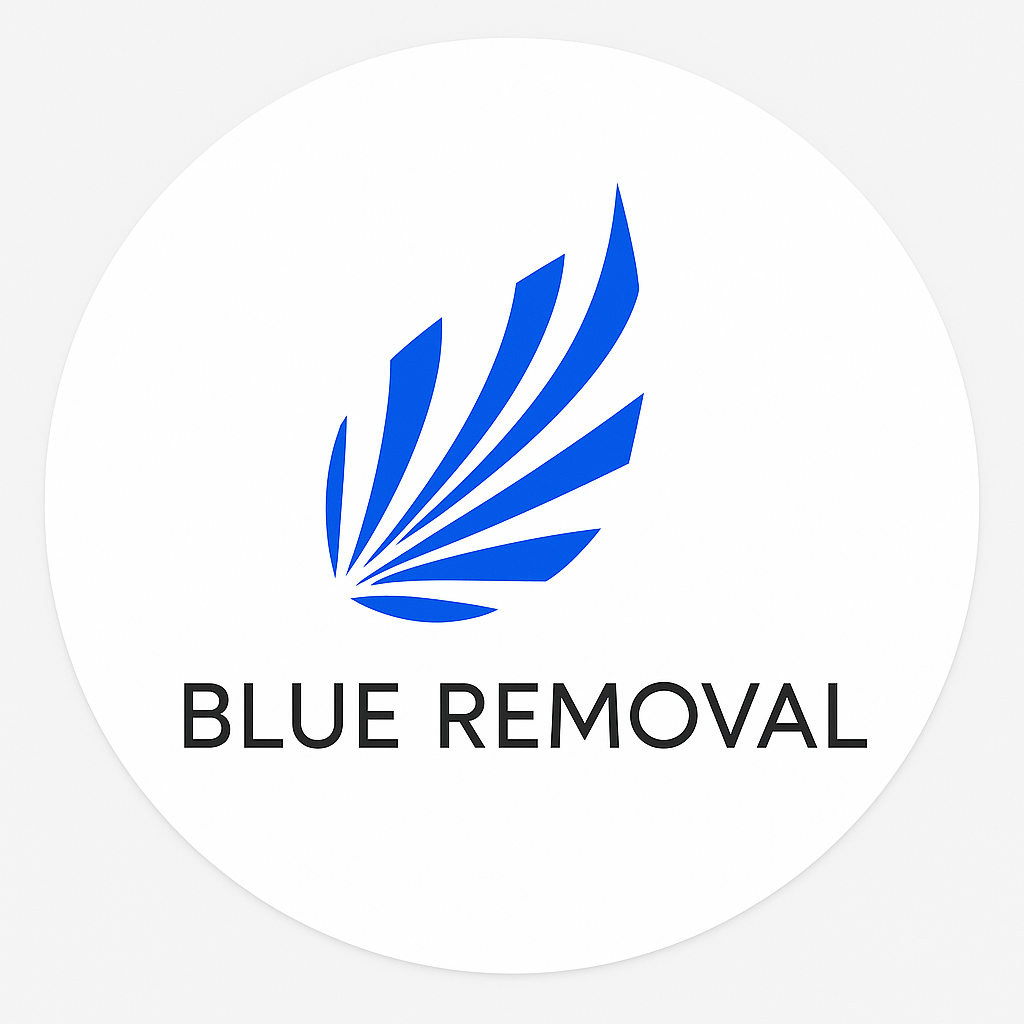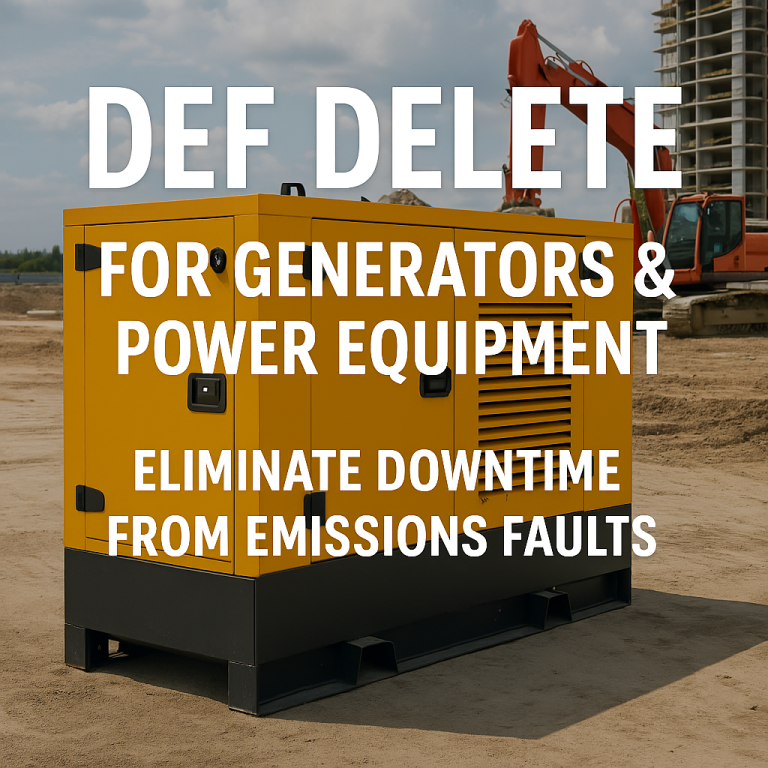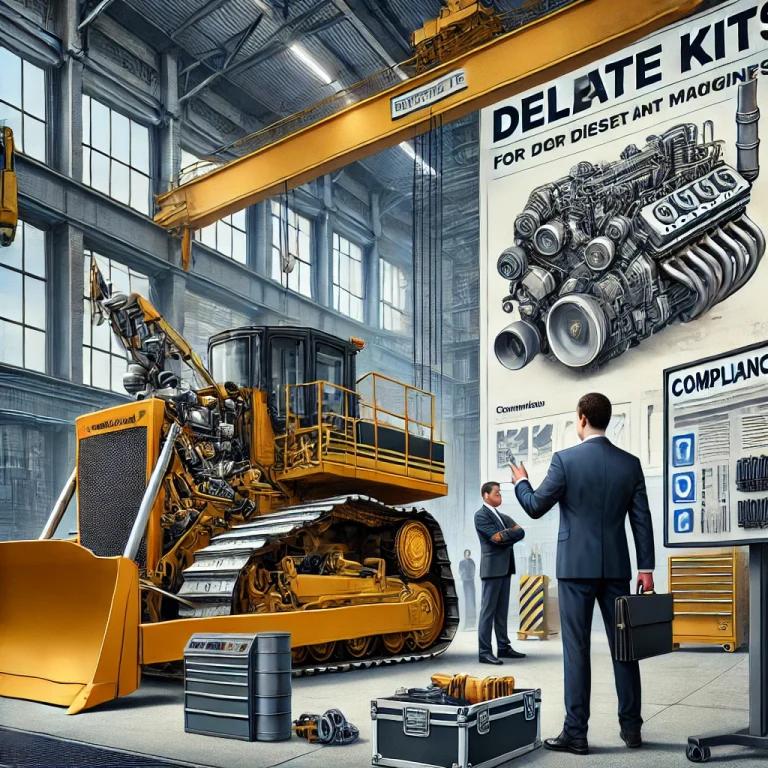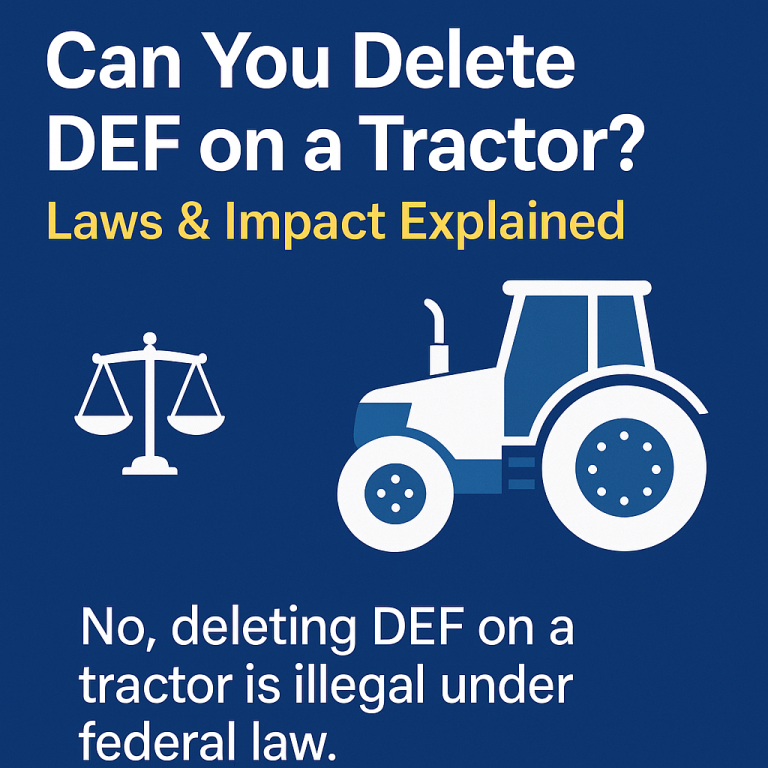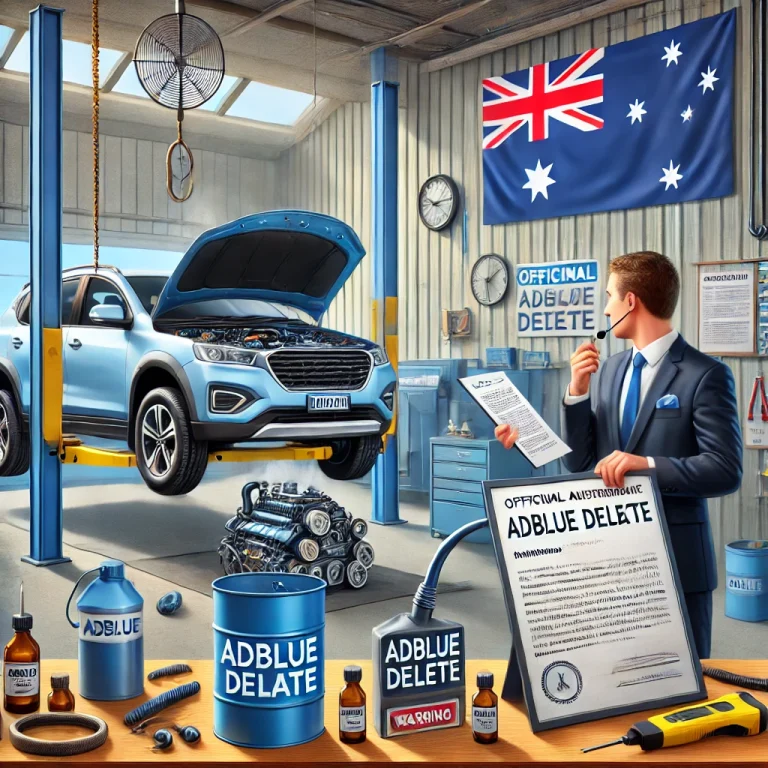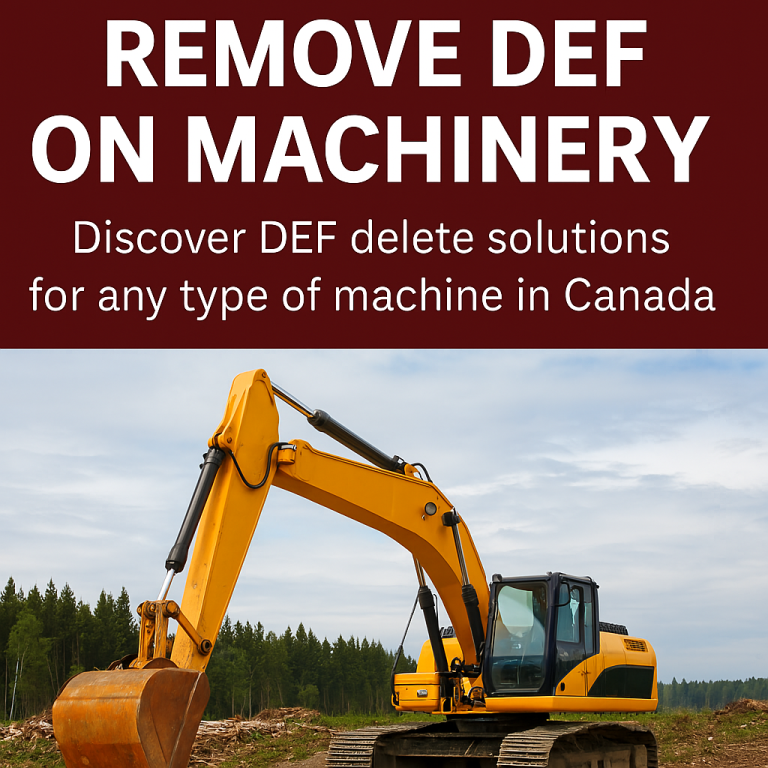Emissions Delete Benefits for Construction Machinery in the USA & Canada
In the construction industry, heavy machinery plays a crucial role in large-scale projects, but the emissions control systems in modern diesel equipment often cause performance issues, increased maintenance costs, and downtime. Many construction companies in the USA and Canada are considering emissions delete solutions to enhance the efficiency and reliability of their machinery.
But is deleting the DEF (Diesel Exhaust Fluid) and DPF (Diesel Particulate Filter) system the right choice for your equipment? In this guide, we’ll explore:
✔️ The benefits of emissions deletes for construction machinery
✔️ Why DEF and DPF systems cause issues
✔️ Legal considerations for emissions deletes in the USA & Canada
✔️ How much it costs to delete the DEF system
✔️ What a DEF delete involves
What is an Emissions Delete for Construction Machinery?
Most modern diesel-powered construction equipment, such as excavators, bulldozers, loaders, and dump trucks, come with factory-installed emissions control systems, including:
- DEF (Diesel Exhaust Fluid) System – Uses a urea-based fluid to reduce nitrogen oxide (NOx) emissions.
- DPF (Diesel Particulate Filter) – Captures and burns off soot to lower emissions.
- EGR (Exhaust Gas Recirculation) – Redirects exhaust gases back into the engine to reduce emissions.
While these systems help meet EPA and Environment Canada regulations, they often cause performance issues, high maintenance costs, and downtime for construction fleets.
An emissions delete involves removing or bypassing these systems to restore the engine’s original performance and eliminate DEF-related maintenance issues.
Key Benefits of Emissions Delete for Construction Equipment
Many construction businesses and fleet operators choose emissions delete solutions to improve efficiency, reliability, and cost savings. Here’s how it can benefit your machinery:
1️⃣ Increased Engine Performance & Power
Emissions control systems restrict engine performance by forcing exhaust gases back into the engine and limiting fuel efficiency. Deleting the DEF, DPF, and EGR systems allows the engine to run more efficiently, leading to:
✅ More horsepower & torque for heavy-duty applications
✅ Improved fuel economy (5–15% increase reported by some operators)
✅ Better throttle response & engine power
2️⃣ Reduced Maintenance Costs & Downtime
DEF and DPF systems are prone to failures, requiring frequent repairs that can be expensive. By deleting these systems, construction companies can reduce costly downtime and maintenance expenses.
🚧 Common DEF & DPF Issues Eliminated by Deleting the System:
❌ DEF pump failures (costs $1,500+ per replacement)
❌ DPF filter clogging & regeneration cycles (can cost $5,000+ for a full replacement)
❌ EGR valve malfunctions (can cause overheating and engine failures)
💸 Without these components, you save thousands in repairs over the lifespan of your machinery.
3️⃣ No More DEF Fluid Costs
Diesel Exhaust Fluid (DEF) is required for machines with Selective Catalytic Reduction (SCR) systems to function properly. However, purchasing and refilling DEF fluid can be a hassle and add to operational costs.
💰 Average DEF Costs in USA & Canada:
- $3.50 – $5.50 per gallon in the USA
- $4.00 – $6.00 per gallon in Canada
- Annual cost for large fleets: $10,000+
🛠️ Deleting the DEF system removes the need for fluid refills, sensors, and pumps—saving money in the long run.
4️⃣ Extended Engine Life
Without EGR, DPF, and DEF systems, diesel engines:
- Run cooler
- Experience less carbon buildup
- Have fewer injector and turbo issues
🛠️ Our plug-and-play DEF delete emulator costs $1,500 and requires no software, no tuning, and no downtime.
5️⃣ Fewer Regeneration Cycles & No DPF Clogs
No more forced regen downtime or DPF-related shutdowns. Productivity stays high.
Supported Brands for DEF Delete
We offer DEF delete solutions for the most common construction equipment brands, including:
Our emulators are waterproof, fully reversible, and come with a 2-year warranty.
Legal Considerations for Emissions Deletes in the USA & Canada
While emissions deletes offer significant benefits, it’s important to understand the legal risks associated with modifying emissions control systems.
🇺🇸 USA Regulations (EPA Compliance)
- Off-road equipment is covered under different rules than on-road vehicles.
- However, federal law prohibits tampering with emissions systems on most diesel engines — especially on-road trucks.
- Is DEF Delete Illegal in Texas?
📍 However, some operators in private job sites or off-road applications choose to proceed with deletes, accepting the risk.
🇨🇦 Canada Regulations (Environment Canada Compliance)
- Similar to the USA, Canada enforces strict emissions rules for construction equipment.
- Fines for modifying emissions systems can be severe, particularly in provinces with strict environmental laws (Ontario, British Columbia, Quebec).
- Enforcement varies depending on the region and application of the machinery.
✅ Many companies choose emissions deletes for off-road equipment used on private property or non-regulated job sites.
How Much Does It Cost to Delete the DEF System?
The cost of a DEF delete varies depending on the type of machinery and whether software tuning is required. Check out our detailed DEF delete pricing here.
Typical DEF Delete Costs for Construction Equipment:
🛠️ Software tuning only – $800 to $2,500
🔧 Full DEF, DPF, & EGR delete kit – $3,000 to $7,000
🧰 Professional delete service (labor included) – $5,000 to $10,000
💡 Pro Tip: Many operators see a return on investment within 6–12 months due to fuel savings and lower maintenance costs.
Final Thoughts: Is an Emissions Delete Worth It?
For construction companies and fleet operators in the USA and Canada, deleting the DEF, DPF, and EGR systems can provide massive benefits in performance, cost savings, and machine longevity.
✅ Pros of an Emissions Delete:
✔️ More horsepower & fuel efficiency
✔️ Fewer mechanical failures & expensive repairs
✔️ No DEF fluid costs or system failures
✔️ Extended engine life & fewer regen cycles
⚠️ Cons & Risks:
- May violate emissions regulations (check local laws)
- Potential fines if operating in regulated areas
For those working on private job sites or off-road applications, an emissions delete can significantly reduce operating costs and keep equipment running longer with fewer breakdowns.
✅ Need a Reliable DEF Delete Solution?
We help construction machines permanently remove DEF system faults across the USA and Canada. Explore our DEF Delete service to get started.
🛠️ Need help choosing the right DEF delete solution for your construction equipment?
Contact us — we’re available 7 days a week to help you eliminate DEF faults and improve performance.
